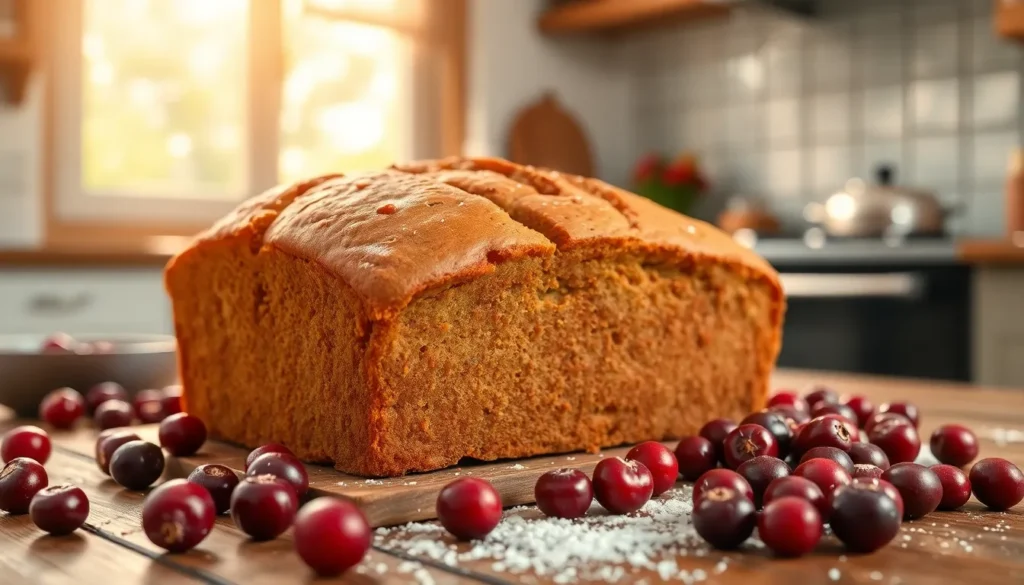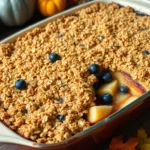Nothing beats the aroma of freshly baked cranberry bread wafting through your kitchen on a crisp fall morning. This delightfully tart and sweet quick bread has become a beloved staple in American households, especially during the holiday season when fresh cranberries are at their peak.
We’ve perfected this foolproof cranberry bread recipe that delivers moist, tender crumb studded with bursts of ruby-red cranberries. The beauty of this bread lies in its versatility – it’s equally perfect for breakfast with your morning coffee, as an afternoon snack, or even as a thoughtful homemade gift for friends and neighbors.
What makes our version special is the perfect balance of tartness from the cranberries and subtle sweetness that doesn’t overpower the fruit’s natural flavor. You’ll love how simple ingredients transform into something truly spectacular with minimal effort.
Ingredients
Creating our perfect cranberry bread starts with gathering the right ingredients in the proper proportions. We’ve organized everything into three simple categories to make your baking process smooth and efficient.
Dry Ingredients
- 2 cups all-purpose flour
- 3/4 cup granulated sugar
- 1 1/2 teaspoons baking powder
- 1/2 teaspoon salt
- 1/2 teaspoon ground cinnamon
- 1/4 teaspoon ground nutmeg
Wet Ingredients
- 1/2 cup unsalted butter, melted and cooled slightly
- 1 large egg, room temperature
- 3/4 cup whole milk
- 1/4 cup fresh orange juice
- 1 teaspoon vanilla extract
- 1 tablespoon orange zest
Cranberries and Add-ins
- 1 1/2 cups fresh cranberries, rinsed and dried
- 1/2 cup chopped walnuts or pecans (optional)
- 2 tablespoons all-purpose flour (for coating cranberries)
Equipment Needed
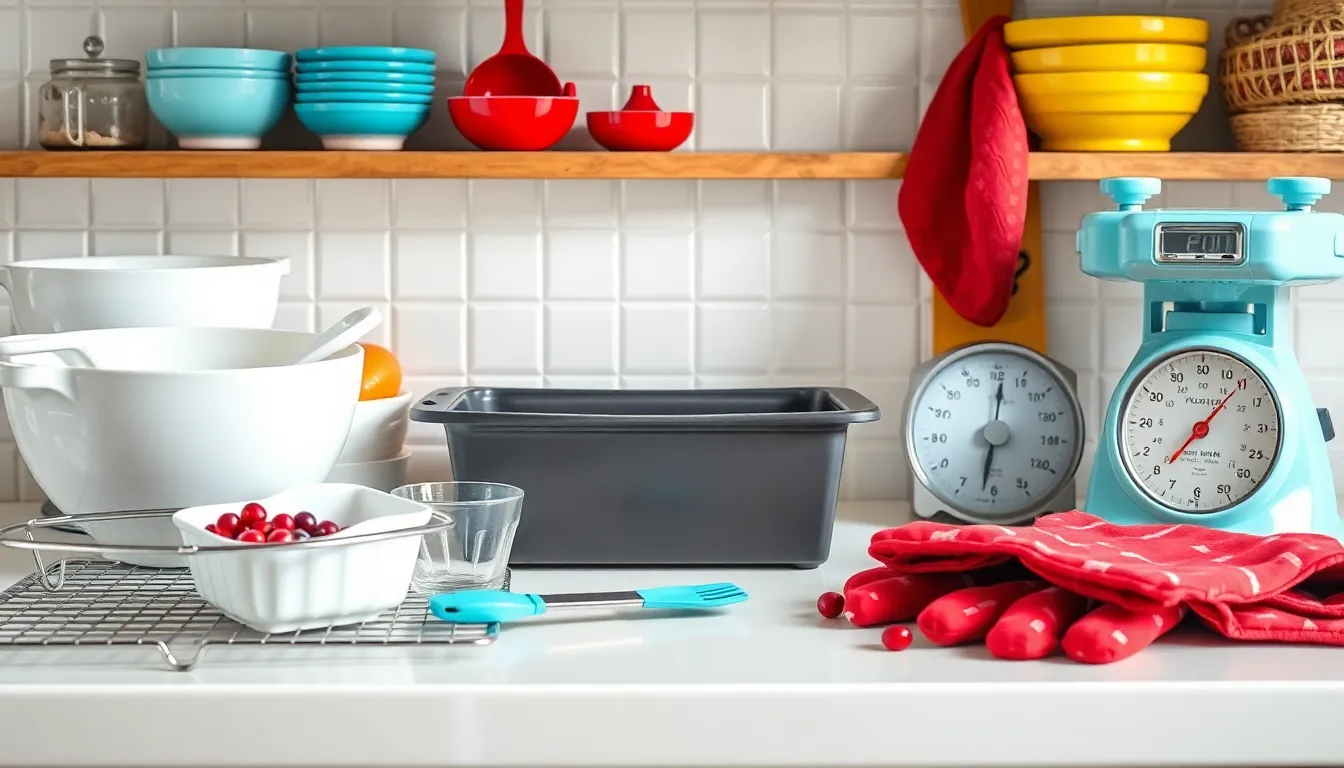
Gathering the right equipment before we start baking ensures our cranberry bread turns out perfectly every time. We recommend having these essential tools ready to create a smooth baking experience.
Mixing Bowls: A large mixing bowl serves as our main workspace for combining wet and dry ingredients. We also need a medium bowl for tossing cranberries with flour before folding them into the batter.
Measuring Tools: Accurate measurements make all the difference in baking success. We use measuring cups for both dry and liquid ingredients along with measuring spoons for smaller quantities like vanilla extract and spices.
Baking Loaf Pan: A standard 9×5 inch loaf pan works best for achieving the classic cranberry bread shape. We prefer using a light colored metal pan or glass loaf dish for even browning.
Flexible Spatula: This tool helps us fold the flour coated cranberries gently into the batter without overmixing. A rubber or silicone spatula works perfectly for scraping down bowl sides too.
Wire Cooling Rack: Proper cooling prevents soggy bottoms and allows our cranberry bread to set correctly. We place the rack on our counter before removing the bread from the oven.
Oven Mitts: Safety comes first when handling hot pans from the oven. We keep heat resistant mitts nearby throughout the baking process.
Kitchen Scale: While not absolutely necessary, weighing ingredients like flour provides the most accurate results. We find this especially helpful for consistent texture in our cranberry bread.
Having these tools organized and within reach makes the entire baking process more enjoyable and helps us achieve professional quality results every time we make this beloved cranberry bread recipe.
Instructions
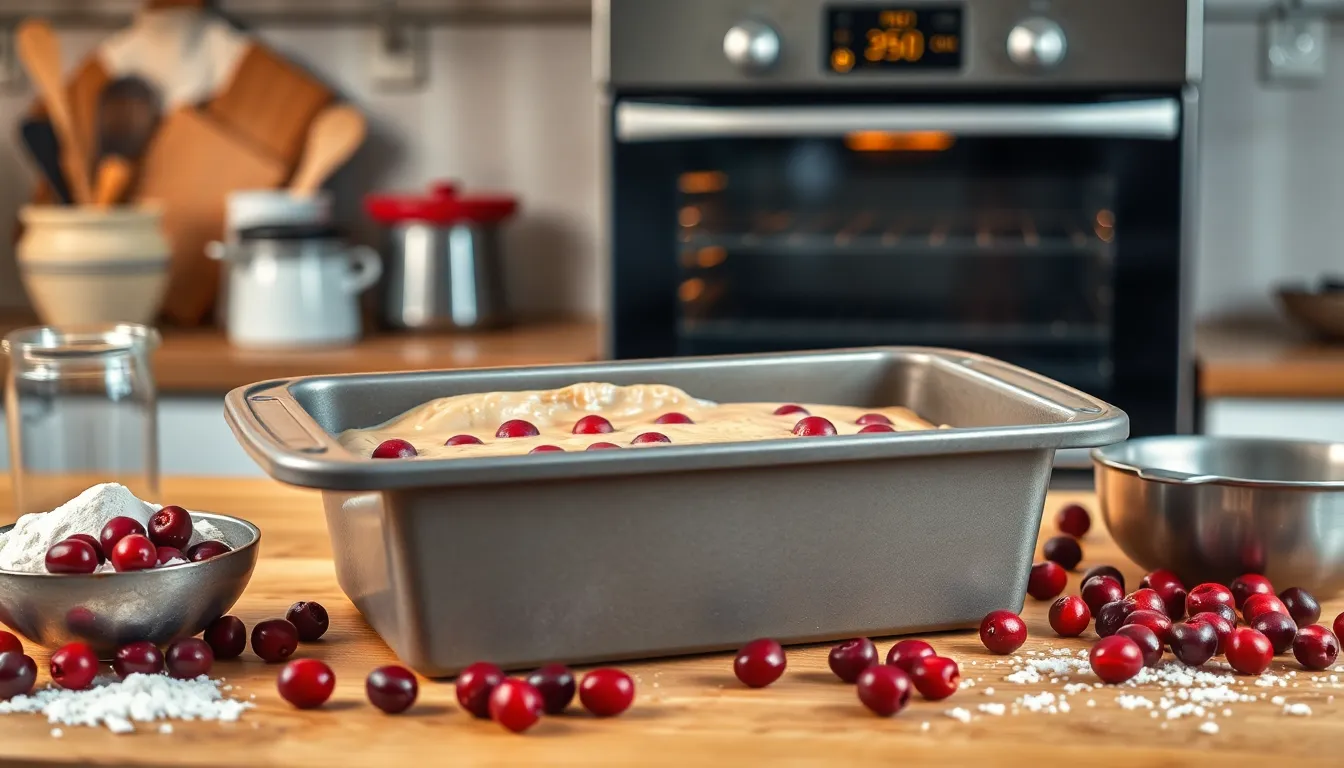
We’ll walk through each step of this cranberry bread recipe to ensure perfect results every time. Follow these detailed instructions for a moist and flavorful loaf that showcases the tart sweetness of fresh cranberries.
Prep the Pan and Oven
We start by preheating our oven to 350°F (175°C) to ensure even baking throughout. Properly preparing our loaf pan prevents sticking and creates a beautiful golden crust. Grease our 9×5-inch loaf pan thoroughly with butter or cooking spray and dust lightly with flour. For smaller portions we can use two 8.5×4.5-inch pans instead. Tap out any excess flour and set the prepared pan aside.
Prepare the Cranberries
Fresh cranberries require special attention to prevent them from sinking during baking. We rinse 1.5 cups of cranberries under cold water and pat them completely dry with paper towels. Toss the dried cranberries with 1/2 tablespoon of flour until each berry is lightly coated. This flour coating creates a barrier that helps the cranberries stay evenly distributed throughout our bread rather than settling at the bottom.
Mix the Dry Ingredients
We combine all our dry ingredients in a large mixing bowl for even distribution. Whisk together 4 cups of all-purpose flour with 1.75 cups of granulated sugar until well blended. Add 1 tablespoon of baking powder and 1 teaspoon of baking soda for proper leavening. Incorporate 2 teaspoons of salt to enhance all the flavors in our bread. Whisking ensures no lumps remain and creates an even texture throughout.
Combine Wet Ingredients
Our wet ingredients create the moisture and binding elements for tender cranberry bread. We mix 1 cup of fresh orange juice with 2 tablespoons of freshly grated orange peel in a separate bowl. Add 4 tablespoons of melted shortening or butter along with 2 well-beaten eggs. Stir the mixture until all ingredients are fully incorporated and the texture appears smooth and uniform.
Fold Together the Batter
We bring our wet and dry ingredients together with gentle technique to avoid tough bread. Gradually add the dry mixture to our wet ingredients while stirring just until combined. The batter should look slightly lumpy rather than completely smooth. Overmixing develops gluten and creates dense bread texture. Carefully fold in our flour-coated cranberries and any nuts we’re using with a rubber spatula. Use gentle folding motions to distribute the cranberries evenly without breaking them.
Bake the Cranberry Bread
We pour our batter into the prepared loaf pan and spread it evenly with our spatula. Bake for 45-55 minutes until the top turns golden brown and springs back lightly when touched. Test for doneness by inserting a toothpick into the center of the loaf. The toothpick should come out clean or with just a few moist crumbs attached. Cool the bread in the pan for 10-15 minutes before carefully turning it out onto a wire cooling rack. Complete cooling takes about 1 hour and prevents the bread from becoming soggy on the bottom.
Cooling and Storage
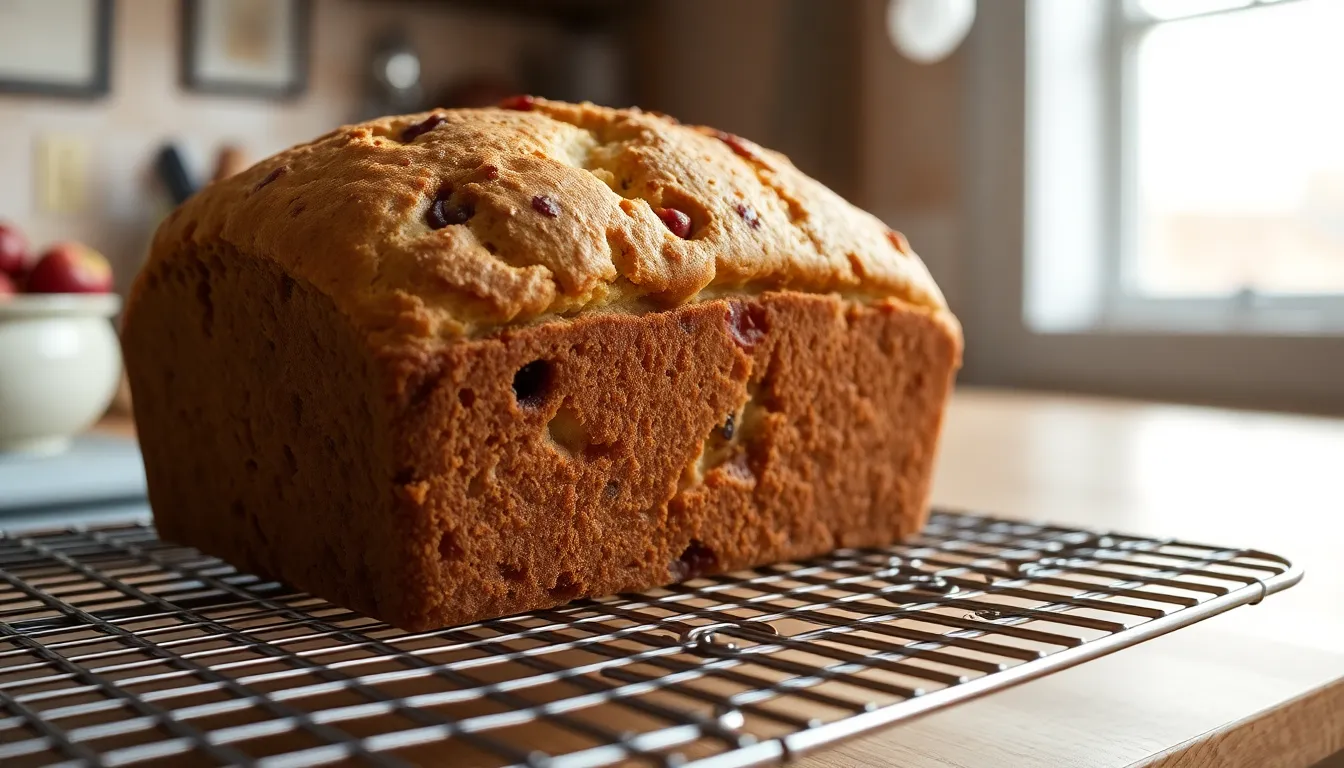
We know that proper cooling and storage techniques are essential for maintaining the quality and extending the shelf life of your freshly baked cranberry bread. These practices ensure optimal texture and flavor while preventing spoilage.
Cooling Instructions
We always allow our cranberry bread to cool completely on a wire rack before attempting to slice or wrap it for storage. This prevents moisture buildup inside the packaging and ensures the best texture and flavor. Never cover the bread while it remains warm since this creates condensation and makes the surface soggy.
We recommend waiting at least one hour for complete cooling before handling the bread. Use only fully cooled bread for slicing to prevent crumbling and maintain clean cuts. The wire rack allows air circulation around the entire loaf which prevents the bottom from becoming soggy.
Storage Tips
We store our cooled cranberry bread in an airtight container or wrap it tightly in plastic wrap or aluminum foil. At room temperature properly wrapped cranberry bread remains fresh for up to 3 days.
For longer storage we place the wrapped bread in the refrigerator where it keeps for up to 5–7 days depending on the exact recipe and humidity levels. Always ensure the bread is completely cool before refrigerating to prevent condensation.
We can freeze cranberry bread for extended preservation by wrapping the completely cooled bread tightly in plastic wrap or aluminum foil then placing it in a freezer-safe bag or airtight container. Remove as much air as possible before sealing to prevent freezer burn.
| Storage Method | Duration | Temperature |
|---|---|---|
| Room temperature | Up to 3 days | 68-72°F |
| Refrigerated | 5-7 days | 35-40°F |
| Frozen | Up to 3 months | 0°F or below |
We thaw frozen bread at room temperature or overnight in the refrigerator before serving. Slice and wrap individual portions if you plan to freeze or store the bread for easy use later. This method allows you to thaw only what you need without exposing the entire loaf to temperature changes.
Recipe Variations
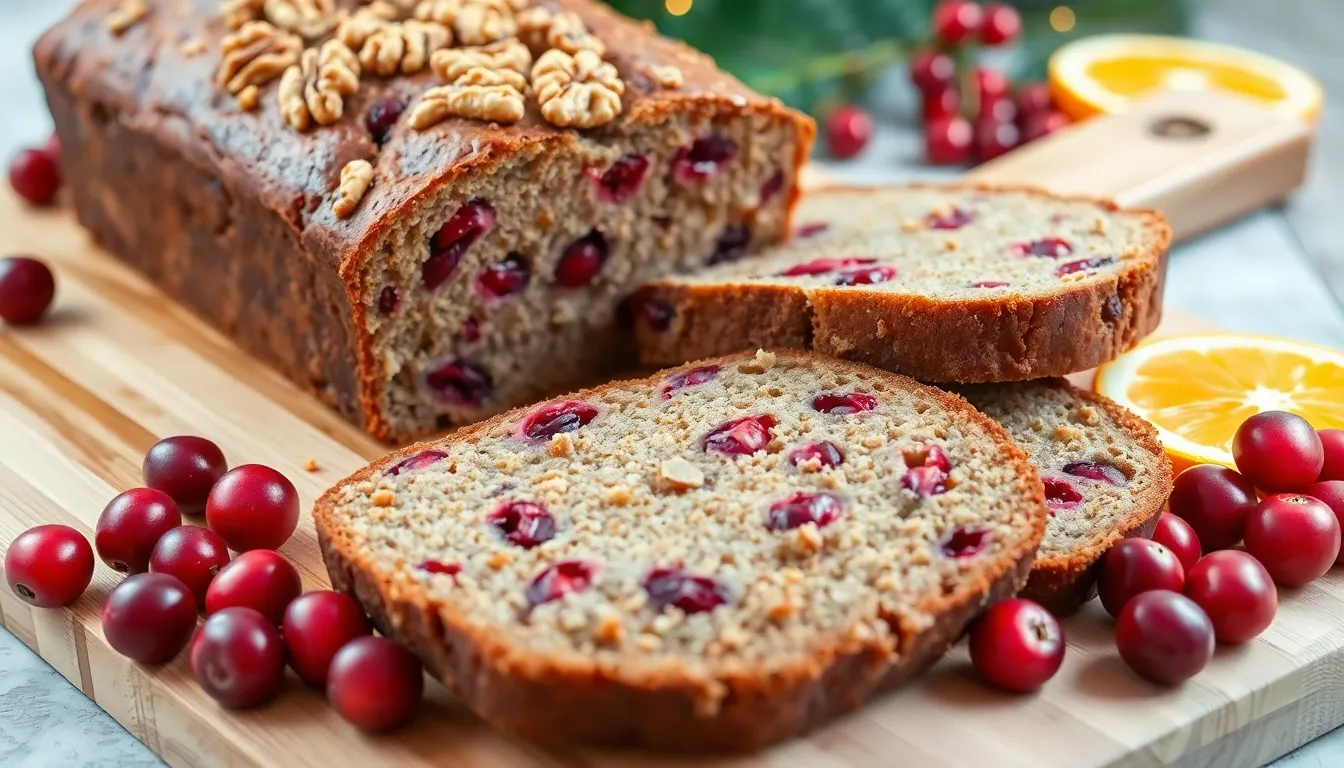
Our basic cranberry bread recipe serves as the perfect foundation for countless delicious variations. We can easily customize this versatile bread to suit different flavor preferences and dietary needs.
Orange Cranberry Bread
We love adding bright citrus notes to create this popular variation that perfectly complements the tart cranberries. Add the zest of 1 large orange and 1/4 cup freshly squeezed orange juice to the wet ingredients when combining them in step 4. The orange zest provides aromatic oils that infuse throughout the bread while the fresh juice adds vibrant citrusy flavor. This combination creates a bakery-quality loaf with a more complex flavor profile that tastes especially refreshing during the holiday season.
Cranberry Walnut Bread
We recommend including 1/2 cup chopped walnuts when folding in the cranberries during step 6 for added texture and nutty richness. The walnuts provide a delightful crunch that contrasts beautifully with the soft bread and bursts of tart cranberries. We suggest roughly chopping the walnuts into uniform pieces about the size of the cranberries to ensure even distribution throughout each slice. This variation creates a more substantial bread that works wonderfully for breakfast or afternoon snacks.
Sugar-Free Version
We can easily adapt our recipe for those watching their sugar intake by making simple substitutions to the sweetener. Replace the granulated sugar with honey or maple syrup while adjusting the amount according to taste since these natural alternatives provide more concentrated sweetness. We also recommend using sugar-free sweeteners like stevia or erythritol if preferred though these may slightly affect the final texture of the bread. When using liquid sweeteners like honey or maple syrup reduce the milk by 1-2 tablespoons to maintain the proper batter consistency.
Make-Ahead Instructions
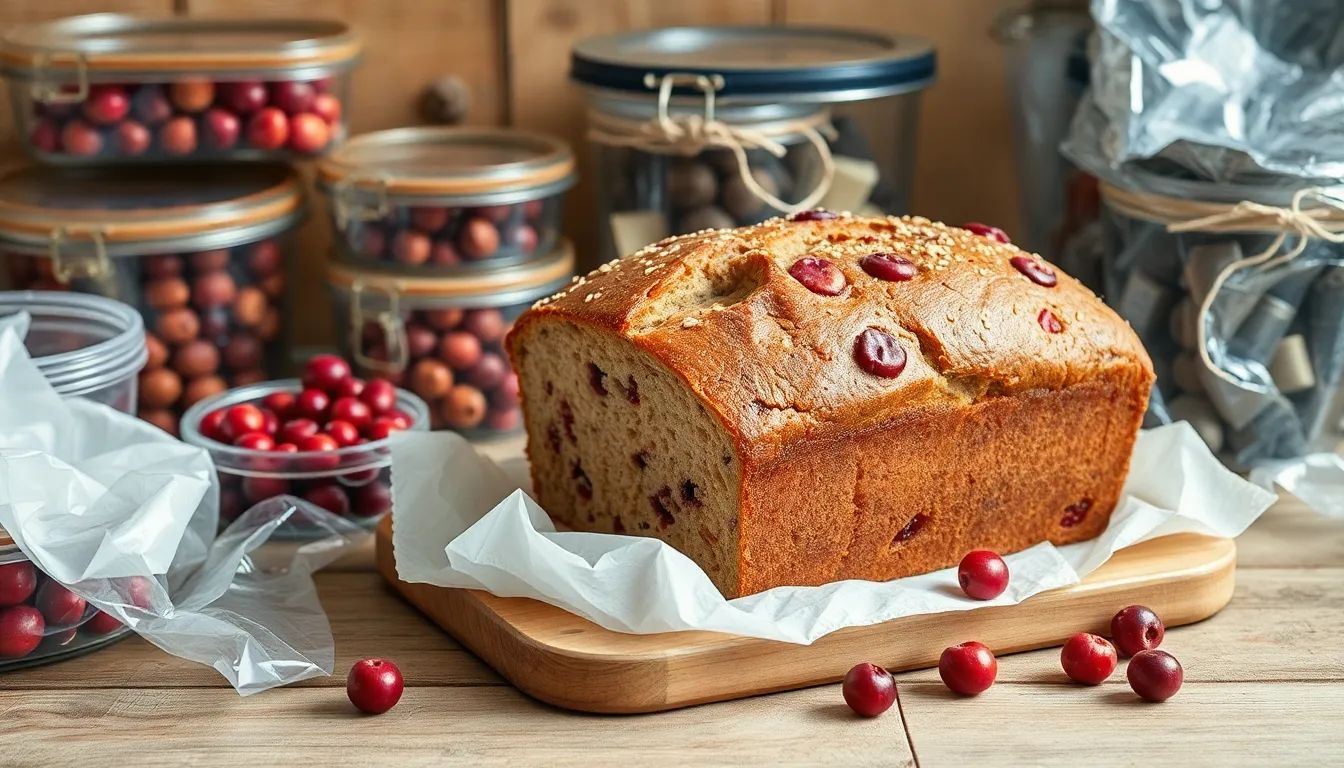
Planning ahead transforms cranberry bread baking from a last-minute scramble into a stress-free experience. We can prepare this delicious bread well in advance using several proven storage methods that maintain its fresh taste and moist texture.
Storage at Room Temperature
Store our freshly baked cranberry bread in an airtight container for optimal freshness at room temperature. The bread stays delicious for up to 3-4 days when kept unwrapped in proper storage containers. We recommend waiting until the bread cools completely before transferring it to storage to prevent condensation buildup.
Refrigerated Storage
Extend the shelf life by wrapping the cranberry bread loosely in plastic wrap before refrigerating. An airtight container works equally well for refrigerated storage and maintains the bread’s moisture content. Refrigerated cranberry bread delivers longer freshness compared to room temperature storage.
Freezing for Long-Term Storage
Wrap the cooled cranberry bread thoroughly in aluminum foil or plastic wrap for freezer storage. Place the wrapped bread inside an airtight container to provide an extra layer of protection against freezer burn. Frozen cranberry bread maintains its quality and can be stored for later use when properly wrapped and containerized.
| Storage Method | Container Type | Duration |
|---|---|---|
| Room Temperature | Airtight container (unwrapped bread) | 3-4 days |
| Refrigerated | Plastic wrap or airtight container | 5-7 days |
| Frozen | Aluminum foil/plastic wrap + airtight container | Up to 3 months |
Thaw frozen cranberry bread overnight in the refrigerator before serving. Room temperature thawing takes approximately 2-3 hours for individual slices. We suggest slicing the bread before freezing to make portion control easier and reduce thawing time for single servings.
Serving Suggestions
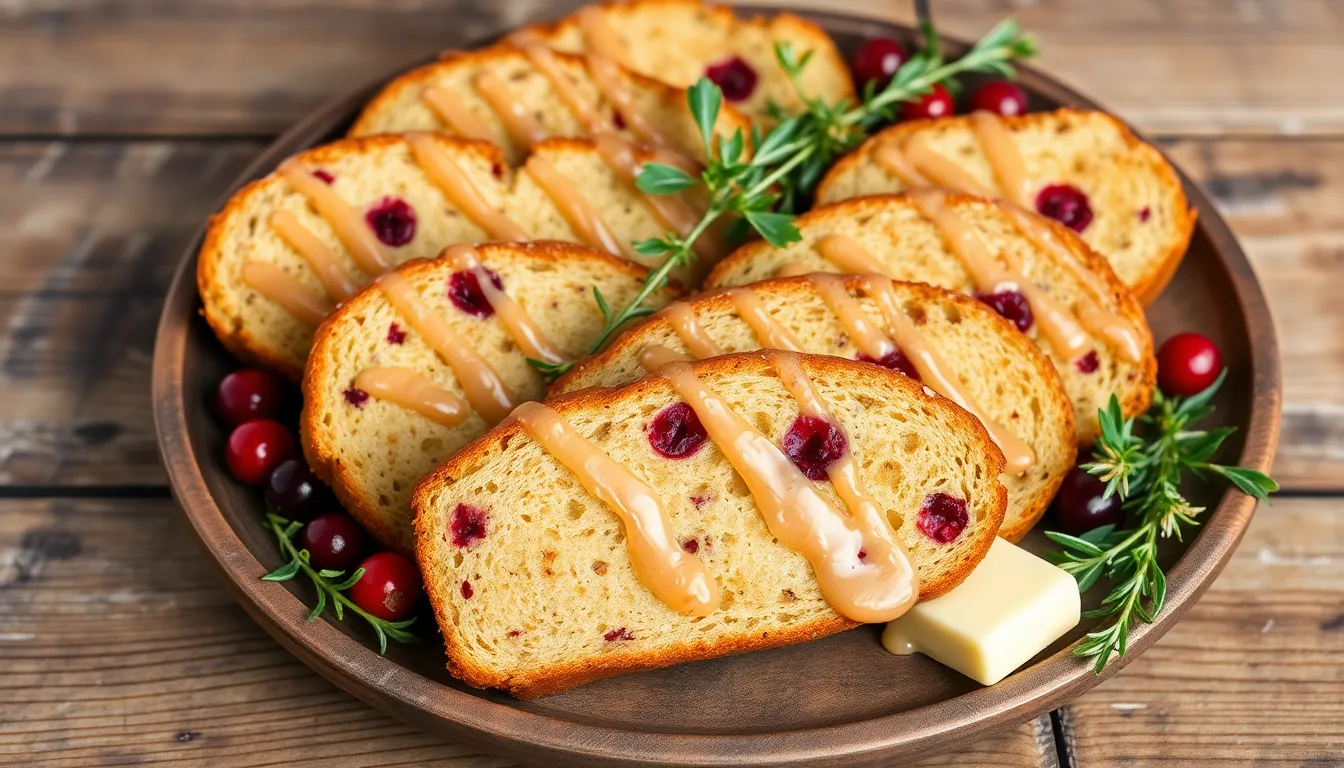
Our cranberry bread shines in many ways throughout the day making it an incredibly versatile addition to your kitchen. We recommend serving it warm for breakfast alongside a generous spread of butter or cream cheese that melts beautifully into the tender crumb. The tangy cranberries pair wonderfully with the richness of these dairy accompaniments creating a balanced morning treat.
Toasting slices brings out deeper flavors while adding a delightful textural contrast between the crispy exterior and soft interior. We suggest lightly toasting day-old slices to revive their freshness and enhance the overall eating experience.
For afternoon snacking we find that cranberry bread pairs exceptionally well with hot beverages. Coffee enthusiasts will appreciate how the bread’s sweetness complements both light and dark roasts while tea lovers can enjoy it with Earl Grey or chai blends. The combination creates a perfect midday break that satisfies without being overly heavy.
Transform your cranberry bread into an elegant dessert by drizzling it with our optional orange glaze. Mix 1 cup powdered sugar with freshly squeezed orange juice and orange zest until smooth. This citrusy topping adds a sweet and tangy finish that elevates the bread from simple to sophisticated.
Consider gifting cranberry bread baked in miniature loaf pans during holiday seasons. These smaller portions make thoughtful presents for neighbors, coworkers, or family members. We recommend wrapping them in decorative paper or placing them in clear cellophane bags tied with ribbon for a professional presentation.
Cranberry bread also works beautifully as part of a brunch spread. Slice it thick and arrange on a platter with other baked goods, fresh fruit, and spreads. The vibrant red cranberries add visual appeal while providing a tart contrast to sweeter breakfast items like muffins or pastries.
Troubleshooting Tips

Even experienced bakers encounter challenges when making cranberry bread. We’ve compiled answers to the most common issues that can arise during the baking process to help you achieve perfect results every time.
Preventing Undercooked Bread
Undercooked cranberry bread remains one of the most frustrating problems we see in home kitchens. Always preheat your oven completely before placing the bread inside and use an oven thermometer to verify the actual temperature matches your setting. Position the bread pan in the center of the oven to ensure even heat distribution and prevent overbrowning on the top or bottom. Test for doneness by inserting a toothpick into the center of the loaf – it should come out with just a few moist crumbs attached.
Fixing Crumbly Texture Issues
Crumbly cranberry bread typically results from insufficient fat content or overbaking. Measure your butter and oil precisely according to the recipe specifications to maintain proper moisture levels. Avoid baking beyond the recommended time even if the top appears pale. Chill the completely cooled bread for at least 30 minutes before slicing to reduce crumbling and achieve cleaner cuts.
Eliminating Flour Lumps
Flour lumps create an unpleasant texture in finished cranberry bread. Use a wire whisk to thoroughly combine all dry ingredients before adding wet components. Mix the batter just until ingredients come together and avoid overmixing which can develop gluten and create tough bread. Sift flour if you notice persistent clumping issues with your particular brand.
Addressing Rising Problems
Poor rising often stems from expired leavening agents or improper mixing techniques. Replace baking powder and baking soda every six months for optimal effectiveness. Work quickly once you add baking soda to the wet ingredients to prevent gas release before the bread enters the oven. Room temperature ingredients blend more easily and activate leavening agents more effectively than cold components.
Managing Cranberry Distribution
Cranberries that sink to the bottom indicate insufficient coating or overly wet batter. Toss fresh or thawed cranberries in a light coating of flour before folding them into the batter. Frozen cranberries should be used directly from the freezer without thawing to prevent excess moisture release. Gently fold cranberries into the batter using a spatula rather than stirring vigorously.
Conclusion
This cranberry bread recipe delivers everything we love about homemade baking – simplicity warmth and incredible flavor. We’ve equipped you with all the tools tips and variations needed to create bakery-quality results in your own kitchen.
Whether you’re planning ahead for the holidays experimenting with different flavor combinations or troubleshooting common baking challenges this recipe adapts to your needs. The balance of tart cranberries and tender crumb makes every slice a delightful experience.
Now it’s time to preheat that oven and fill your kitchen with the irresistible aroma of fresh-baked cranberry bread. Your family and friends will thank you for this delicious homemade treat that captures the essence of the season perfectly.
Frequently Asked Questions
What makes cranberry bread moist and tender?
The combination of melted butter, whole milk, and fresh orange juice creates the perfect moisture balance. The key is not overmixing the batter and using room temperature ingredients. The orange juice adds both moisture and complementary flavor to the tart cranberries.
Can I use frozen cranberries instead of fresh ones?
Yes, frozen cranberries work well. Don’t thaw them first – use them straight from the freezer and lightly coat with flour before folding into the batter. This prevents them from sinking to the bottom and bleeding color throughout the bread.
How long does cranberry bread stay fresh?
Properly stored cranberry bread stays fresh for 3-4 days at room temperature when wrapped in plastic wrap or stored in an airtight container. For longer storage, wrap tightly and freeze for up to 3 months.
What size loaf pan should I use for cranberry bread?
Use a standard 9×5 inch loaf pan for best results. This size ensures even baking and the classic loaf shape. Make sure to grease the pan well or line with parchment paper to prevent sticking.
Can I make cranberry bread ahead of time?
Yes, cranberry bread is perfect for make-ahead baking. You can prepare the dry and wet ingredients separately the night before, then combine and bake in the morning. Fully baked bread also freezes beautifully for up to 3 months.
Why did my cranberry bread turn out dry?
Dry cranberry bread usually results from overbaking or too much flour. Check doneness with a toothpick at the minimum baking time. Measure flour accurately using the spoon-and-level method, and avoid overmixing the batter.
Can I substitute the sugar in cranberry bread?
Yes, you can make a sugar-free version using sugar substitutes like stevia or monk fruit sweetener. Use the equivalent amount as specified on the substitute package. The bread may have a slightly different texture but will still be delicious.
What nuts work best in cranberry bread?
Chopped walnuts and pecans are the most popular choices, adding a nice crunch and complementary flavor. Use about ½ cup of chopped nuts. Toast them lightly before adding for enhanced flavor and texture.
How do I prevent cranberries from sinking to the bottom?
Coat fresh or frozen cranberries lightly with flour before folding them into the batter. This helps them stay suspended throughout the bread. Also, avoid overmixing once the cranberries are added to prevent them from breaking down.
Can I add an orange glaze to cranberry bread?
Absolutely! An orange glaze makes cranberry bread more elegant and dessert-like. Mix powdered sugar with fresh orange juice and zest, then drizzle over cooled bread. Let the glaze set for 10-15 minutes before serving.

